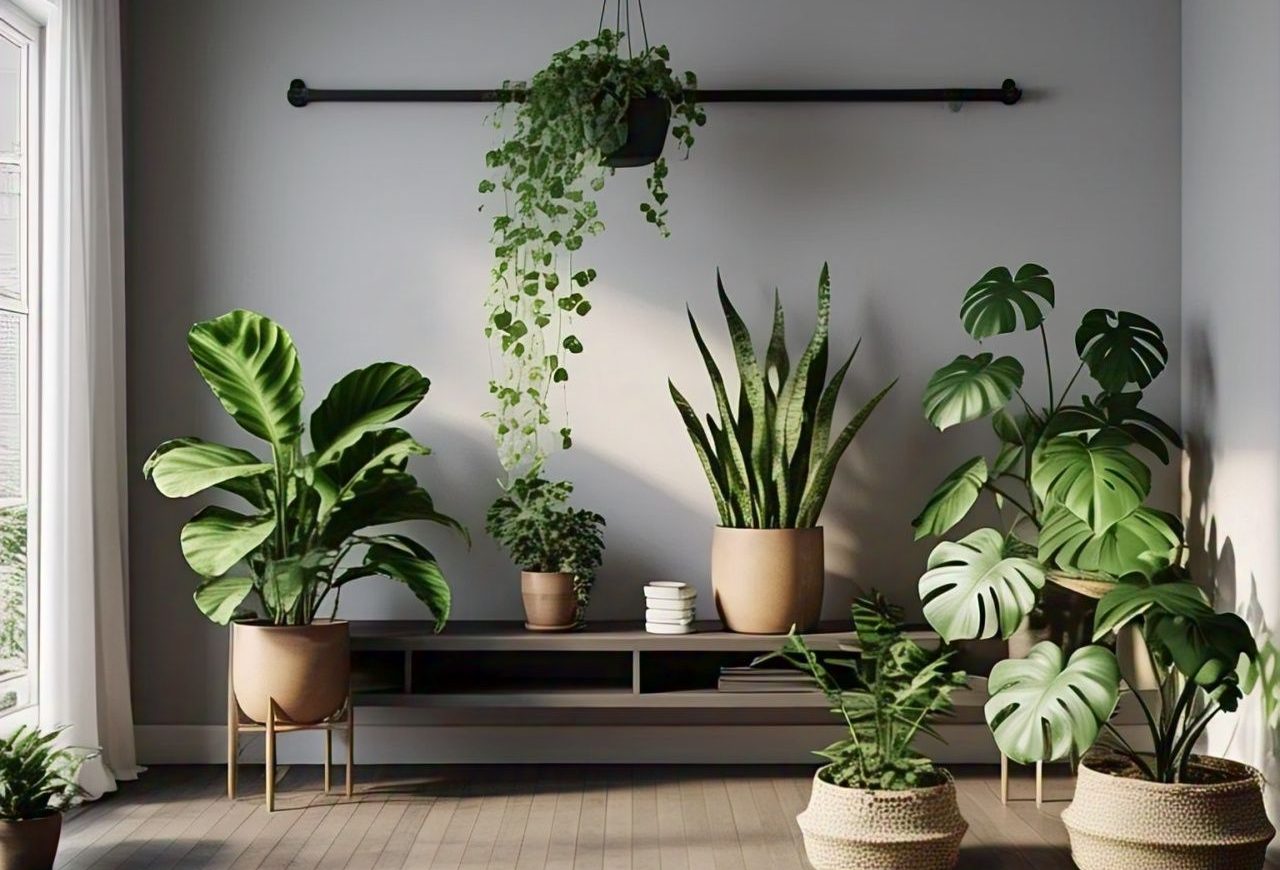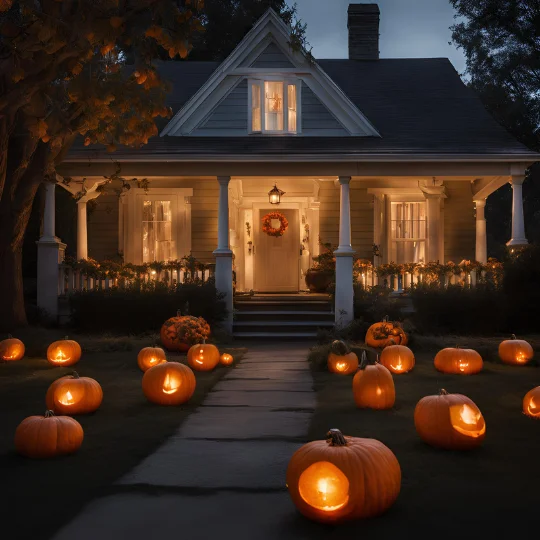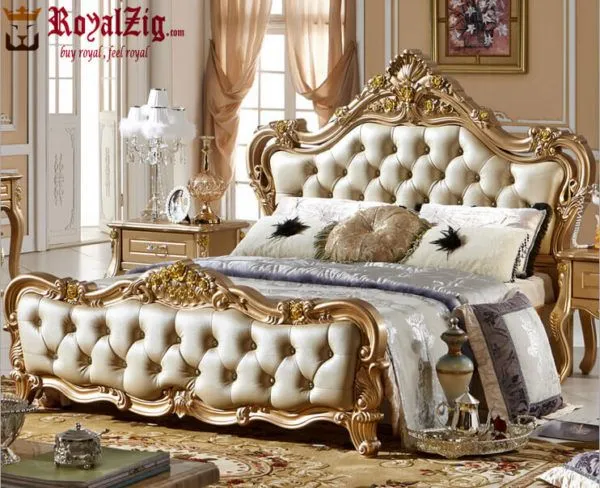Have you ever felt like your living space is just living by name, but it actually looks dead? It could be that dull area that doesn’t “spark joy” or the office desk that feels more like a jail cell than a place to get ideas. What if the answer wasn’t a new piece of furniture or a tech tool, but something simple, alive, and life-changing?
Not many people know this, but indoor plants for home are becoming the unsung stars of modern interior design. Stats show the indoor plants market can grow 7% (CAGR) from 2024 to 2031 globally.
These lovely little creatures are more than just decoration pieces; they’re friends who make us feel better, clean the air, and bring a little nature into our busy lives. Agree? Let’s talk about the magic of indoor plants and how they can make your rooms look and feel completely different.
Adding plants inside is becoming more popular in modern interior design.
Indoor plants have gone from being a weird hobby to an important part of modern home design in the past few years. Why? Because they look good and work well, which are two very important things. Additionally, they take care of your health secretly like our moms do.
When it comes to today’s home, why are indoor plants important?
Houses are more than just places to eat and sleep. They’re safe places where we can relax, make art, and connect with each other. Indoor plants make these places much better in deep ways. Not only do they look nice, but they also clean the air by taking in harmful chemicals and giving off healthy oxygen. An interior design and fitout company can transform living spaces by integrating nature-inspired elements that enhance aesthetics and well-being.
The two benefits are better looks and better air quality.
- Imagine coming home from a long day and entering a room full of plants. Feeling better just by imagining, right? You’re not crazy; studies have shown that plants can improve your health and make you feel less stressed.
- Plus, they look beautiful! Plants, like a tall Monstera in the corner or a trailing Pothos on your shelf, give your room structure and movement that not many other things can.
Important Points:
- Plants inside are more than just pretty decorations; they’re useful works of art.
- Their job is to clean the air, which makes your home healthy.
- Their style is so flexible that it can go with any design style, from simple to bohemian.
Problems that often come up when trying to design indoor plants
Adorning your house with plants is not always as effortless as it may seem. It can feel like a hard job when there isn’t enough room, enough light, or you forget to water the plants sometimes.
Not enough room and bad lighting
Not everyone is lucky enough to have rooms that are big and bright. Things that can be hard in apartments and smaller homes are often dark corners and limited room.
What to do? Getting the plants that do well in these situations. There are many indoor plant species that can survive in the dark and don’t grow too big.
Problems with maintenance
It’s easy to give up when plants start to wilt or leaves turn brown despite your best efforts. Most plant problems happen because people either love them too much (hello, overwatering!) or forget about them.
Solution? Like in family, every person has their own behaviour, same with these little friends. Know them before buying. And if you have a hectic life like the majority of people, then choose easy-to-maintain plants. for example: Succulents
What You Need to Know About Indoor Plants in Interior Design?
Plants are more than just pretty faces, like every design is unique on its own it deserve unique complimenting plant too.
How Plants Look in Design: When it comes to design, plants are great at doing a lot of different things at once. They smooth the edges of modern rooms with sharp lines, add natural textures to simple rooms, and sometimes even serve as focal points. For example, a well-placed Fiddle Leaf Fig can hold a whole room together.
Important Points:
- Greenery makes you feel and think better.
- Adding warmth and color to cold, modern rooms is what plants do.
- Strategic arrangement can easily improve the look of a room.
Trendy styles in interior design and which plant will go well with them?
To take your interior design to the next level, you need to know that different styles call for different plants.
Minimalist:
Choose smooth plants, like the Snake Plant, whose leaves stand up straight.
Boho:
For a lush jungle vibe, go crazy with Pothos and Monstera that hang down.
Scandinavian:
Fiddle Leaf Figs or Rubber Plants look great here; they add style without taking over the room.
Modern:
Use bright, geometric pots for plants like the ZZ Plant that make a statement.
Important Points:
- Plants should match the style of your home for a smooth look.
- In modern or sparse rooms, use big plants to make a statement.
- Mix and layer plants for a lively, lived-in look in a variety of styles.
The 7 Best Houseplants for Designing Inside
Monstera Deliciosa, also known as the Swiss Cheese Plant
This plant is a showstopper with its beautiful split leaves. It makes a focal point that’s hard to miss and is great for big rooms.
Care: It needs modest light and watering once a week.
Design Tip: To make it stand out even more, put it in a sleek clay pot.
2. Snake Plant (Sansevieria): This is the most low-maintenance plant you can get. It’s great for small areas because its leaves stand up straight.
Care: Does well in almost any light.
Design tip: For a sleek look, put it in closets or small corners.
3. Fiddle Leaf Fig (Ficus Lyrata): The shiny, big leaves of this plant are great for making a room more interesting.
Care: It needs bright light that comes from the side.
Design tip: Place it in a woven box next to a sunny window for a stylish look.
4. Pothos (Epipremnum aureum): This is a flexible vine that looks good hanging from shelves or in pots.
Care Tips: Can handle low light and watering only sometimes.
Design tip: Put it on kitchen shelves or in your home office to make it look nicer.
5. Peace Lily (Spathiphyllum) root: This plant is known for its beautiful white flowers and makes you feel calm.
Care: It does best in medium to low light.
Design tip: For a soft, put-together look, try pairing it with pots that have different textures.
6. Ficus elastica, or rubber plant: Its bright, shiny leaves look great in both modern and industrial settings.
Care tip: It needs mild light and regular watering.
Design Tip: For a striking look, use a pot with bright colors.
7. ZZ Plant (Zamioculcas zamiifolia), this plant is great for people who are always on the go. Its dark green, shiny leaves do best when you don’t have them.
Care Tips: Don’t water too much.
The idea for Design: Put it in simple corners to add a little difference.
How to Pick the Best Plant for Your Space?
First, look at how much light is in the room and how much space you have. Plants that are easy to take care of, like the Snake Plant or the ZZ Plant, are great choices for beginners.
Maintenance Tips That Busy Homeowners Can Use
Having trouble keeping up with when to water? Get pots that water themselves or set your phone to remember you.
Style Tips for Making Plants Fit In Without Any Problem
Plants of different heights or shapes should be layered. Add vertical interest with plant stands, and make sure the colors of the pots go with the rest of the room’s decor.
Important Points:
- Choose plants based on how you live and how the room is set up.
- To avoid overwatering, use tools like moisture meters.
- To make plants look nice, layer and style them.
Tools and extras that make plant integration better
For planters, choose ceramic pots for a modern look, handmade baskets for a bohemian look, or metal pots for an industrial look.
Care Tools: Shears, wetness meters, and natural bug sprays.
Adding to the decor: Hangers and boxes made of macramé can make even the most basic plants look better.
The End: Bringing Nature Inside for Style and Comfort
Having plants inside isn’t just a trend; it’s a way to add life. In addition to adding life to areas, they also clean the air and make places feel calm. Start with something small, like a snake plant or a ZZ plant, and see how they change your home. As your home grows into a stylish and comfortable haven, you may start to long for more plants.
FAQs
1. What are the easiest plants for beginners to care for indoors?
Snake Plant, ZZ Plant, and Pothos are all great choices because they don’t need much care.
2. How can I tell if I give my plants too much water?
There are clear signs, such as leaves turning yellow, stems becoming soft, and a constant damp smell.
3. Can plants live inside with little light?
Yes! Low light is good for Snake Plants, ZZ Plants, and Peace Lilies.
4. How should I arrange plants in a small room for the best look?
To save room, hang planters, mount shelves on the wall, or use small plants like the Snake Plant.




